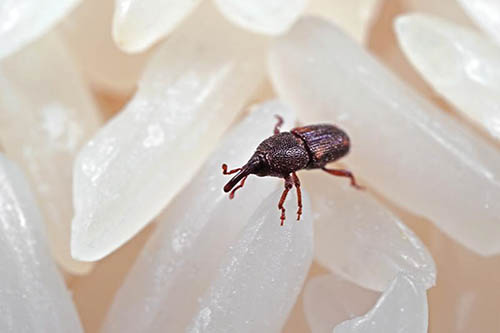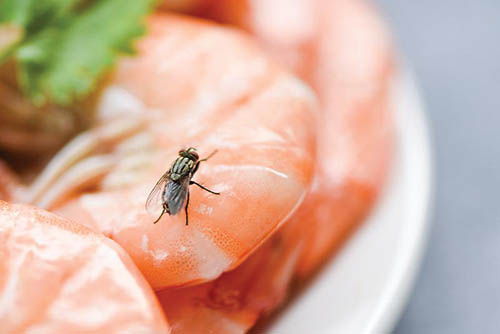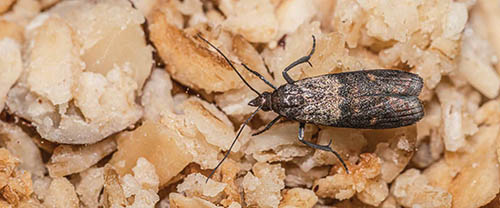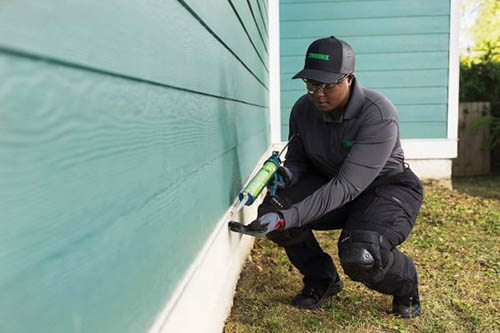— By Scott Green —
Pest control in restaurants: What you’re getting wrong and how to fix it.
Pest control is a critical aspect of restaurant management that directly impacts health standards, customer satisfaction and operational efficiency. Despite best efforts, many establishments fall short in pest-proofing, often due to overlooked vulnerabilities and emerging pest threats. Under-standing the common mistakes and what emerging threats to look out for is essential in maintaining a pest-free environment.
Common Mistakes in Restaurant Pest-Proofing
Restaurants can provide an inviting environment for pests due to the amount of food, moisture and shelter. However, several common oversights can complicate pest issues:

• Inadequate Sanitation Practices: Minor lapses in cleanliness can attract pests inside the establishment. This can range from food particles under equipment, spills that are left unattended or improper dishwashing habits create an ideal environment for insects and rodents. Grease buildup, which is often overlooked in ventilation systems, can also attract pests like cockroaches, which thrive in warm, greasy conditions.
• Structural Gaps and Openings: Small cracks, unsealed doors and gaps around utility lines can serve as entry points for pests. Rodents, in particular, can squeeze through small openings, which can lead to significant infestations. Even something as simple as a loose tile or a damaged drain cover can provide a hidden entryway for pests.
• Neglecting Regular Inspections: Without routine inspections, early signs of pest activity often go unnoticed until they escalate into major problems. Proactive monitoring is essential to identify and address vulnerabilities promptly.
• Improper Waste Management: Accessible garbage can provide a food source for pests. Overflowing bins, leaky trash bags and dumpsters placed too close to building entrances can attract rodents and insects. Food waste disposal areas should be cleaned daily, and dumpsters should have tightly sealed lids to minimize pest attraction.
• Over Reliance on Reactive Treatments: Many restaurants only address pest issues when they become visible. Instead of waiting for a problem to appear, a proactive pest management plan is recommended year-round.
Unexpected Pests to Watch for This Year
Rodents and cockroaches are well-known intruders in the restaurant industry. However, a broad range of general pests tends to reserve space inside restaurants. Some of those pests include:

• Flies: Flies can contaminate food and surfaces. They breed quickly, making it crucial for early intervention. Many species of flies are attracted to food odors generated by commercial kitchens, such as fruit flies, drain flies and house flies. Flies are known to transmit over 200 different pathogens, which can lead to the contamination of food items, machinery and cooking utensils, posing a risk to staff and customer health.

• Stored Product Insects (SPIs): Beetles, moths and weevils can infiltrate dry goods like flour, grains and rice, leading not only to contamination but possible financial losses as well. SPIs are more likely to infest products that have been opened but can also enter packaging made of paper, cardboard, plastic, cellophane and foil, chewing through the packaging material or crawling through folds and seams. It is important to note that products that are used very little or not subject to the FIFO (First in, First Out) protocol can potentially be a host to SPI as well.
• Birds: Restaurants, especially those with outdoor dining, face issues with birds nesting in or around their establishments. Not only are they loud and can potentially bother the customer, but they can also spread a wide variety of diseases and create sanitation problems in the establishment.
Quick Tips to Ensure Compliance and Protect Operations
Effective pest control measures are vital in food safety and health standards. Consider these tips to help eliminate the root cause of pest infestations:
• Enhance Sanitation Protocols: Establish rigorous cleaning schedules, ensuring that all food preparation and storage areas are spotless. Regularly clean under equipment and in hard-to-reach places where food particles can accumulate. Remove food sources such as waste, spills and inappropriately stored food.

• Seal Entry Points: Conduct thorough inspections to identify and seal gaps, cracks and openings in walls, floors and around utility lines. Ensuring windows are properly sealed can prevent pests from entering the facility. Ensure that screens on vents and doors aren’t damaged and fit properly.
• Implement Regular Pest Inspections: Engaging professional pest control services to perform routine inspections can help with early detection of pest activity and can help prevent future infestations.
• Proper Waste Management: Use sealed, durable garbage bins with tight fitting lids and ensure they are emptied regularly. Keep dumpster areas clean and away from building entrances to minimize attraction. Waste should be disposed of at least once a day, and grease traps should be cleaned frequently to prevent pest attraction.
• Staff Training: Educate employees on the importance of pest prevention, like proper food storage, prompt spill cleanup and reporting signs of pest activity. A well-informed staff is a critical line of defense against infestations.
• Maintain Documentation: Keep detailed records of pest control measures, including inspection reports, treatment dates and actions taken. This documentation is essential for compliance with health regulations and can be helpful during inspections.
Effective pest control in restaurants is a multidimensional initiative requiring diligent sanitation, structural maintenance, regular inspections and staff education. By addressing common oversights and staying vigilant against emerging pest threats, establishments can ensure compliance with health regulations while protecting their reputation and avoiding potential financial losses. Proactive pest management is not just a regulatory obligation but a critical component of successful restaurant operations. Investing in these preventative measures today can save restaurants from major financial and reputational consequences in the future.
— Scott Green is an associate certified entomologist and technical service manager for Terminix. As a Subject Matter Expert, Green oversees and supports foodservice, retail and bioremediation services and has been in the pest control industry for over 17 years.

